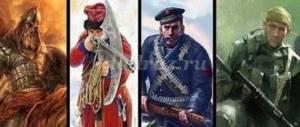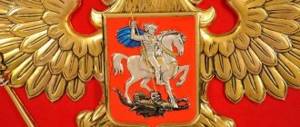On May 8, 1965, by Decree of the Presidium of the Supreme Soviet of the USSR, the Regulations on the honorary title “Hero City” were approved. Today, twelve cities and the Brest Fortress bear the honorary title “Hero City” for the courage and heroism shown during the Great Patriotic War, true self-sacrifice in the name of the Motherland.
We bring to your attention teaching materials for conducting the thematic lesson “Hero Cities”. This lesson may become the first in the “Hero Cities” series of lessons, dedicated to the courage and perseverance of the defenders of the Motherland during the Great Patriotic War.
Author: Olga Evgenievna Kamagina
Recommendations for working with the presentation of the thematic lesson (Lesson of Courage) “Hero Cities” for students in grades 8–11
Lesson option [PDF] [DOCX] Presentation [PDF] [PPTX] Student assignments (worksheet) [PDF] [DOCX]
Goal: developing a value-based attitude to the events of the Great Patriotic War, students’ understanding of the experience of heroic defense of the Motherland.
Tasks:
- instilling in students a grateful memory of the people who defeated fascism; feelings of pride for one's country;
- the formation of students’ personal attitude towards manifestations of heroism and self-sacrifice in the name of the Motherland;
- formation of humanistic qualities of the individual;
- developing the ability to express one’s point of view in a reasoned manner.
The methodological material is of a recommendatory nature. The teacher, taking into account the characteristics of each class, can vary the tasks, their number, and change the stages of the lesson.
The epigraph to the lesson is the words of the poet Mark Samoilovich Lisyansky:
Your father's banner is noisy above you, Your brother was attacking under it. Only then does the city become a hero, When a soldier becomes a hero!
How do you understand the last lines of the quatrain?
The expression “hero cities” was first used in the order of the Supreme Commander-in-Chief (J.V. Stalin) No. 20 of May 1, 1945. Officially, this title was enshrined in the Decree of the Presidium of the Supreme Soviet of the USSR on the approval of the Regulations on the honorary title “Hero City” dated May 8, 1965.
Task No. 1 (worksheet).
Exercise. Using the photographs on the slide, name the hero cities. What helped you answer?
(St. Isaac's Cathedral in Leningrad, Monument to Sunken Ships in Sevastopol, Children's Round Dance fountain in Volgograd, Odessa Opera House).
The first cities to be awarded the title “Hero City” were six cities of the Soviet Union (Leningrad, Stalingrad, Sevastopol, Odessa, Kyiv, Moscow) and the Brest Fortress.
To commemorate the feat of the troops and the population of these cities, by the Decree of the Presidium of the Supreme Soviet of the USSR of December 22, 1942, the following medals were established:
“For the defense of Leningrad”, “For the defense of Odessa”, “For the defense of Sevastopol”, “For the defense of Stalingrad”.
Task No. 2 (worksheet).
In 1965, in addition to Leningrad, Volgograd (Stalingrad), Sevastopol and Odessa, two more cities and the Brest Fortress were awarded the title of “Hero City”.
Exercise. Using the photographs on the slide, name these hero cities.
Task No. 3 (worksheet).
By decree of the Presidium of the Supreme Soviet of the USSR dated May 1, 1944, the medal “For the Defense of Moscow” was established. On the eve of the 20th anniversary of the treacherous attack of Nazi Germany on the Soviet Union, June 21, 1961, the Presidium of the Supreme Soviet of the USSR established the medal “For the Defense of Kyiv.”
Task No. 4 (worksheet).
In 1973–1976 Novorossiysk, Kerch, Minsk and Tula were awarded the title of “Hero City”.
Task No. 5 (worksheet).
On May 6, 1985, the title of “Hero City” was awarded to Murmansk (for the defense of the country’s main strategic port) and Smolensk (for heroism shown in the battle that thwarted the German plan to attack Moscow).
Today, 12 cities and the Brest Fortress bear the honorary title “City-hero” for the courage and heroism shown during the Great Patriotic War, true self-sacrifice in the name of the Motherland. These cities are located in Russia, Belarus, and Ukraine. The history of the feat of these cities is our common history, common memory.
Task No. 6 (worksheet).
In the fall of 1965, on the 41st kilometer of the Moscow-Leningrad highway, near Zelenograd, a mass grave was discovered during construction work. The remains of a soldier found in it in well-preserved uniform without insignia were proposed to be buried near the Kremlin wall to commemorate the 25th anniversary of the defeat of German troops near Moscow.
Today, the Tomb of the Unknown Soldier is a memorial architectural ensemble located near the walls of the Moscow Kremlin in the Alexander Garden.
*The monument was built in 1967 according to the design of architects Dmitry Burdin, Vladimir Klimov, Yuri Rabaev and sculptor Nikolai Tomsky. Since 1997, Post No. 1 has been located at the Tomb of the Unknown Soldier.
The memorial complex consists of several elements: the soldier’s grave with the Eternal Flame, the alley of hero cities and cities of military glory.
On the right side of the burial, along the Kremlin wall, there is an alley with porphyry blocks. Inside the blocks there are capsules with soil brought from places of fierce battles.
*Leningrad land was taken at the Piskarevsky cemetery, Kiev land - at the foot of the obelisk on Victory Square, erected in memory of the participants in the defense of the city. The capsules in Odessa, Minsk, Kerch, Tula, Murmansk and Smolensk contain soil brought from places of fierce battles. The “Stalingrad” block, which bore the name “Volgograd” until 2004, contains land from the Mamayev Kurgan. From Sevastopol, the land was delivered from the Malakhov Kurgan, from Brest - from the foot of the Brest Fortress.
Exercise. The monument was given the status of an object of cultural heritage of Russia, as well as a National Memorial of Military Glory. Why do you think?
Merits and awards of Valentina Tereshkova
Valentina Tereshkova is the first female general in the history of the Russian Army.
- Monument to Valentina Tereshkova on Cosmonauts Alley in Moscow
Awards for V. Tereshkova:
- Hero of the Soviet Union (June 22, 1963);
- Order of Merit for the Fatherland, 1st degree (March 1, 2017) - for outstanding contribution to the strengthening of Russian statehood, the development of parliamentarism and active legislative activity;
- Order of Merit for the Fatherland, II degree (March 6, 2007) - for outstanding contribution to the development of domestic astronautics;
- Order of Merit for the Fatherland, III degree (March 6, 1997) - for services to the state and great personal contribution to the development of domestic astronautics;
- Order of Alexander Nevsky (June 12, 2013) - for his great contribution to the development of Russian parliamentarism and active legislative activity;
- Order of Honor (June 10, 2003) - for his great contribution to the development and strengthening of international scientific, cultural and public relations;
- Dmitry Medvedev awards Valentina Tereshkova with the Order of Friendship. April 12, 2011 Order of Friendship (April 12, 2011) - for his great contribution to the development of domestic manned astronautics and many years of fruitful public activity;
- two Orders of Lenin (June 22, 1963 and May 6, 1981) - for successful activities in developing and strengthening ties with the progressive public and peace-loving forces of foreign countries (the second);
- Order of the October Revolution (December 1, 1971);
- Order of the Red Banner of Labor (March 5, 1987) - for social activities;
- medals;
- USSR pilot-cosmonaut.
State Prize of the Russian Federation for outstanding achievements in the field of humanitarian activities in 2008 (June 4, 2009).
Prize of the Government of the Russian Federation named after Yu. A. Gagarin in the field of space activities (2011) - for the development of domestic manned astronautics, personal participation in the first manned flights, development of international cooperation in the field of space activities, popularization of the achievements of domestic astronautics
Awards of the constituent entities of the Russian Federation: medal “For work for the benefit of the land of Yaroslavl.”
Incentives from the President and Government of the Russian Federation:
- Certificate of Honor from the President of the Russian Federation (March 3, 2012) - for services to the state and active social activities;
- Gratitude of the President of the Russian Federation (March 2, 2000) - for his great contribution to the formation and development of domestic and world cosmonautics;
- Gratitude of the President of the Russian Federation (April 9, 1996) - for great personal contribution to the development of domestic astronautics;
- Certificate of Honor from the Government of the Russian Federation (June 16, 2008) - for many years of fruitful state and public activities, great personal contribution to the development of manned astronautics and in connection with the 45th anniversary of space flight; Certificate of Honor from the Government of the Russian Federation (June 12, 2003) - for great personal contribution to the development of manned astronautics;
- Certificate of Honor from the Government of the Russian Federation (March 3, 1997) - for services to the development of astronautics, strengthening international scientific and cultural ties and many years of conscientious work;
- Gratitude from the Government of the Russian Federation (March 6, 2002) - for many years of fruitful state and public activities.
- Departmental awards of the Russian Federation: Medal “Participant of the military operation in Syria” (Ministry of Defense of the Russian Federation, 2016)
Foreign awards:
- Medal "Golden Star" of the Hero of Socialist Labor of the Czechoslovak Socialist Republic and the Order of Klement Gottwald (August 1963);
- medal "Golden Star" of the Hero of Socialist Labor of the People's Republic of Belarus and the Order of Georgiy Dimitrov (September 9, 1963);
- Order of Karl Marx and Becker Medal (October 1963, GDR);
- Grunwald Cross, 1st degree (October 1963, Poland);
- Order of Trishakti Patta, 1st class (November 1963, Nepal);
- Order of the Star of the Republic of Indonesia, 2nd class (November 1963);
- Order of the Volta (January 1964, Ghana);
- Order of the State Banner of the Hungarian People's Republic (April 1965);
- medal "Golden Soyomb" of the Hero of Labor of the MPR and the Order of Sukhbaatar (May 1965, MPR);
- Order of Culture, 1st degree (August 1969, Afghanistan);
- Grand Cordon of the Order of the Star of Jordan (December 1969, Jordan); Order of Civil Merit (Syria);
- Order of the Necklace of the Nile (January 1971, UAR);
- medal "Gold Star" of the Hero of Labor of Vietnam (October 1971);
- Bernardo O'Higgins Order and Air Force Gold Badge (March 1972, Chile);
- Order of the Yugoslav Flag, 1st class (November 1972);
- Order "For Achievements in Science" (November 17, 1973, SRR);
- Order of the Sun (1974, Peru); Order of Playa Giron and Order of Ana Betancourt (1974, Cuba);
- medal “For Strengthening Brotherhood in Arms” (1976, NRB);
- Order of Friendship (1997, Laos);
- Order of Prince Branimir with a large ribbon (February 17, 2003, Croatia).
Awards from scientific, public and religious organizations:
- Gold Medal named after K. E. Tsiolkovsky of the USSR Academy of Sciences;
- gold medal of the British Society for Interplanetary Communications “For success in space exploration” (February 1964, Great Britain);
- gold medal "Space" (FAI);
- Gallembert Prize for Astronautics; gold medal of the World named after Joliot-Curie (1964, France); Order of the Wind Rose of the International Committee for Aeronautics and Space Flight;
- "Golden Mimosa" of the Italian Women's Union (1963);
- badge of the Komsomol Central Committee “For active work in the Komsomol” (1963);
- VDNKh gold medal (June 28, 1963);
- honorary badge of DOSAAF USSR (July 1, 1963);
- Olympia Award for Public Recognition of Women's Achievements (2003);
- National award “Russian of the Year” in the category “Legend of Russia” (2004);
- Ring of Honor of Eduard Rein (2007) Order of St. Seraphim of Sarov, II degree (ROC; 2007);
- Order of St. Euphrosyne, Grand Duchess of Moscow, II degree (ROC; 2008);
- Order of Glory and Honor, 1st degree (ROC; March 6, 2012);
- Imperial Order of the Holy Great Martyr Anastasia (July 12, 2013, Russian Imperial House);
- Order of the Venerable Euphrosyne, Grand Duchess of Moscow, 1st degree (ROC; March 6, 2020).
Honorary citizen of the cities - Kaluga, Yaroslavl, Vladikavkaz, Alagir (Russia), Karaganda, Baikonur (until 1995 - Leninsk, Kazakhstan, 1977), Gyumri (until 1990 - Leninakan, Armenia, 1965), Vitebsk (Belarus, 1975), Montreux and Drancy (France), Montgomery (Great Britain), Polizzi-Generosa (Italy), Darkhan (Mongolia, 1965), Sofia, Burgas, Petrich, Stara Zagora, Pleven, Varna (Bulgaria, 1963), Bratislava (Slovakia, 1963).
Commemorative copper-nickel coin 1 ruble USSR, issued in 1983 in honor of the 20th anniversary of the flight of the first female cosmonaut Valentina Tereshkova
Tereshkova was awarded the title “The Greatest Woman of the 20th Century.”
The following are named after Tereshkova:
- crater on the Moon;
- minor planet 1671 Chaika (according to its call sign - “Chaika”);
- streets in different cities, including Alexandrovo, Balakhna, Balashikha, Vitebsk, Vladivostok, Dankovo, Rubtsovsk, Dzerzhinsk, Grodno, Donetsk, Irkutsk, Ishimbay, Kemerovo, in the city of Lenkoran, Republic of Azerbaijan, Klin, Korolev, Kostroma, Krasnoyarsk, Lipetsk , Mineralnye Vody, Mytishchi, Nizhny Novgorod, Nikolaev, Novosibirsk, Novocheboksarsk, Orenburg, Penza, Petropavlovsk-Kamchatsky, Ulan-Ude, Ulyanovsk, Yaroslavl, Novocherkassk, prospect in Gudermes;
- square in Tver,
- embankment in Evpatoria;
- schools in Yaroslavl (where she studied), in Novocheboksarsk, in Karaganda and in the city of Esik (Alma-Ata region);
- Sports and fitness center in the city of Kursk (Solyanka tract, 16);
- Children's sports center for recreation and recreation of children and adolescents in the Kaliningrad region (45 km from Kaliningrad);
- the Cosmos Museum (not far from her village) and planetarium in Yaroslavl;
- a gazebo on the shore of the Sea of Azov in the city of Shchelkin (Crimea, Leninsky district) is named after V. Tereshkova, although information about her visit to the city of power engineers has not been confirmed.
- The name of the hotel in Karaganda was given by the call sign “Chaika” after V. Tereshkova rested there after the flight.
- River passenger motor ship "Valentina Tereshkova".
Two monuments to Tereshkova have been erected: on the Alley of Cosmonauts in Moscow and in the Bayevsky district of the Altai Territory, on whose territory she landed. It is also planned to erect a monument in Tereshkova’s homeland in Yaroslavl.
One of the monuments was erected in the city of Lvov, but the public proposes to demolish it within the framework of the law on decommunization.
Former governor of the Yaroslavl region Anatoly Lisitsyn proposes to install it in Yaroslavl.
In 1983, a commemorative coin with the image of V. Tereshkova was issued.
Thus, Valentina Tereshkova became the only Soviet citizen whose portrait was placed on a Soviet coin during her lifetime.
The annual city athletics relay race for the prize of V.V. Tereshkova is held in Yaroslavl. The Yaroslavl DOSAAF military-patriotic education center bears her name.
The songs are dedicated to Valentina Tereshkova: “The girl is called a seagull” (music by Alexander Dolukhanyan, lyrics by Mark Lisyansky, performer - Muslim Magomaev), “Valentina” (in Moldavian, music by Dumitru Gheorghita, lyrics by Efim Krimerman, performer - Sofia Rotaru), “Valentina” ( “Valya-twist”) (in Polish, authors: J.Janikowski-W.Patuczynski, performers: vocal ensemble “Filipinos”), “Seagull (Valentina)” (music by Dmitry Lazarev and Tatyana Gulyaeva, lyrics by Kirill Savinov, performer: Natalia Ivanova).
Postage stamps from different countries are dedicated to Tereshkova: Postage stamp of the USSR by Lesegri, 1963 Postage stamp of the USSR, 1963 Coupling of postage stamps of the USSR, 1963.
Postage stamp of Russia, 2003 Postage stamp of Russia, 2013 Postage stamp of the GDR, 1963 Postage stamp of Hungary, 1965 Postage stamp of Azerbaijan, 2013.
Conclusion
In June 1963, Valery Bykovsky and Valentina Tereshkova, the world's first female cosmonaut, went into space on Vostok-5 and Vostok-6. Bykovsky's flight lasted about five days - at that time a record duration for a person to stay in a state of weightlessness. These were extraordinary flights! Everything was done here for the first time, and the first steps in space (from today’s point of view) were, naturally, timid. But it was these six ships of the Vostok series that paved the way for new heroes.
There are only a few such people and they are called HEROES. Heroes of LABOR, because they work tirelessly for the benefit of other people, like heroes of WAR, they explore new paths and spaces to achieve their goals.
“Valentina Tereshkova remains the only woman in the world to have completed a solo three-day flight in space. This amazing achievement brought her eternal fame."
Moscow
Napoleon, and after him Hitler, called Russia and the USSR “a colossus with feet of clay.” But for some reason this colossus did not want to kneel, but clenched his teeth and fists and threw himself at the spears and machine guns with his bare chest. This happened near Moscow.
At the cost of terrible losses, but the enemy moved slower and slower towards the capture of Moscow. He was stopped near Brest, he was beaten near Smolensk and Odessa, he was not given rest near Minsk and Yelets. The defensive operation near Moscow also lasted for several months. Defensive fortifications were built, thousands of kilometers of trenches were dug. They fought for every village, for every height. But the magnificent Wehrmacht machine moved forward. They even saw the walls of the Kremlin through binoculars, but for many of them this became their last memory.
On December 5, 1941, the Germans were shown the way home. The offensive of our troops began near Moscow. More than a million soldiers and officers shouting “Hurray!” began to drive out the fascists. The victory near Moscow became one of the key moments of the war, people believed that we could win...
In Moscow, on Poklonnaya Hill, there is a huge memorial complex dedicated to the Great Patriotic War.
This complex includes:
- The monument is in the form of an obelisk 141.8 meters high. This height is not accidental. It reminds us of the 1418 days of war.
- Three churches that were erected in memory of all those who died during the war.
- Central Museum of the Great Patriotic War.
- An open-air exhibition of military equipment and other memorials.







